June 20, 2023
Layer Up + Pruning Native Plants in Summer
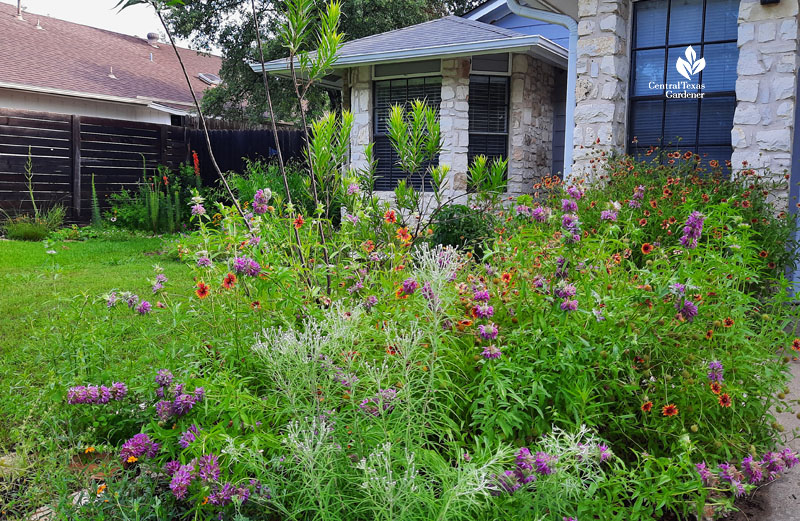
While eyebrow-singeing heat sets in, let’s make plans for fall planting! One of the hardest things for gardeners to figure out is the art of layering for successional blooming. PLUS, the whole gang must be compatible with the soil, amount of light, and watering needs, too. Michelle and Louis Lay absolutely nailed it in a very new garden where they’re whittling away lawn with native plants.
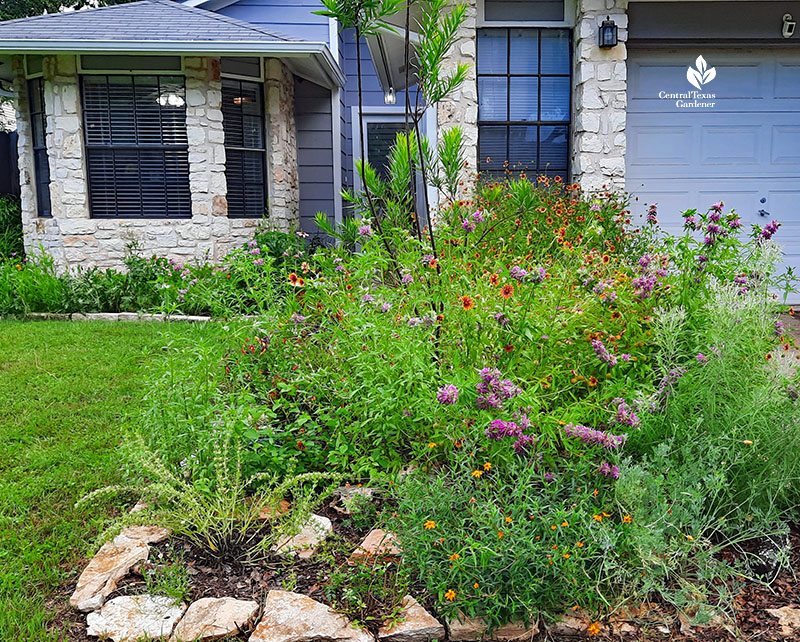
When we stopped by in late May, bee balm and gaillardia dominated this driveway strip under a baby desert willow—its summertime funnel-shaped flowers a hummingbird hit. Graceful woolly ironweed may be blooming now, and while bee balm fades, others claim top pollinator billing, including golden-flowered zexmenia and rock penstemon, its red tubular blooms another hummingbird sensation. Our video coming later this year.
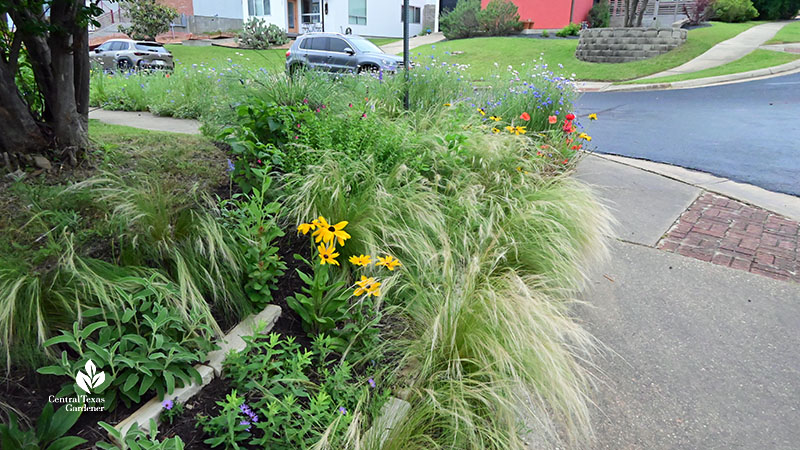
Streetside at James Barela and Ray Delgadillo’s new garden, they layer spring’s annual bluebonnets and poppies with fall-blooming perennial aromatic aster (jumping in early on cloudy days when we visited) and Mexican feather grass. In this view, we’ve got spring-to-fall rudbeckias, Salvia greggii and Salvia ‘Indigo Spires’, and spring-blooming Jerusalem sage. (Watch our video online next week to see what else!)
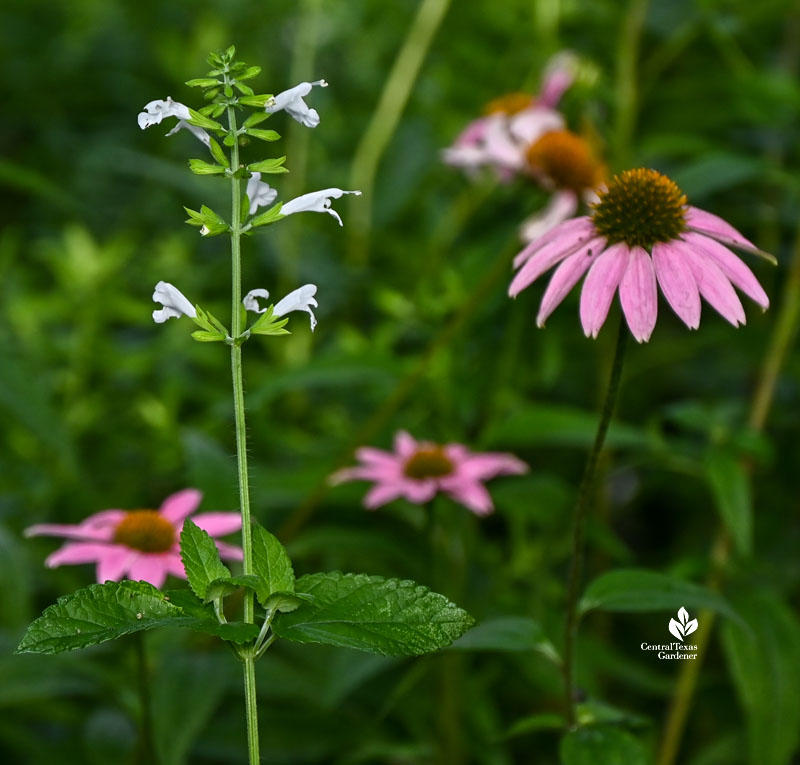
In my garden, hummingbirds and butterflies dart around white-flowered native tropical sage (Salvia coccinea) and perennial coneflowers in an island bed’s part shade side. The coneflower’s at the very edge of the sunlight-to-shade demarcation. The sage heralds from Kathleen Scott’s native plant garden, a division she shared when we visited last fall. In harsh winters, we consider Salvia coccinea a self-seeding annual, but despite February’s freeze, it made it back. I bet it knew I was rooting for it as a treasured pass-along!
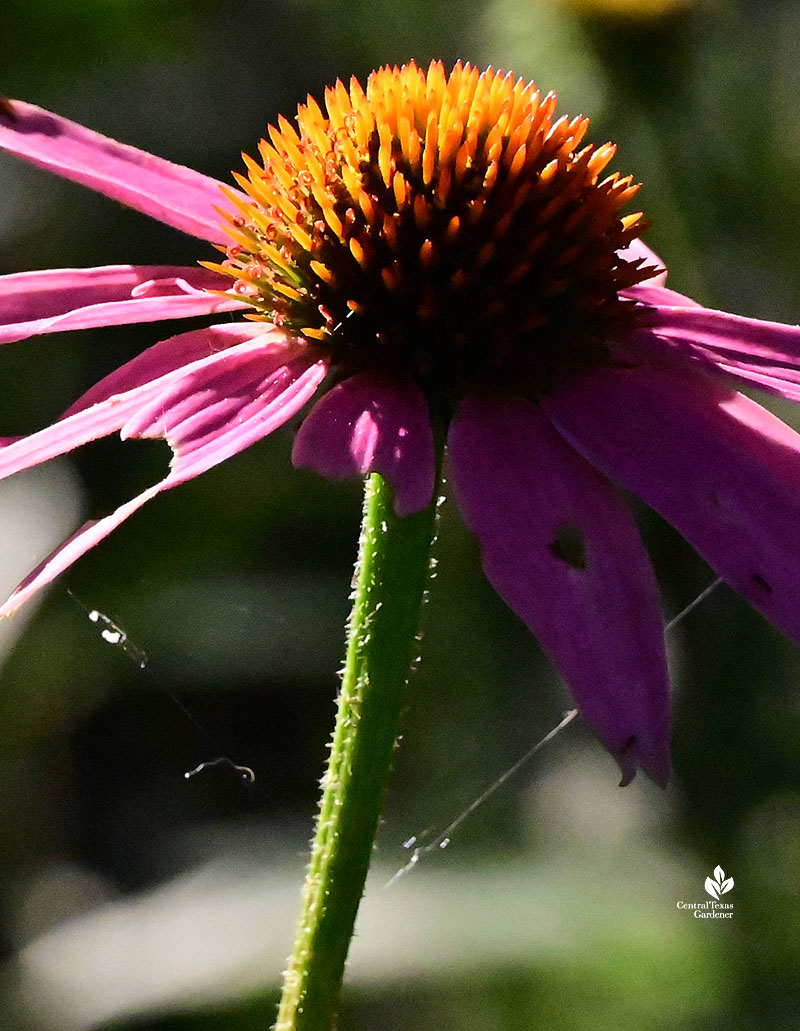
Mainly, the coneflowers thrive in the sunny side of the bed (I’ve had no luck with them in the part shade side). I suspect a grasshopper nipped this one. Apparently, an opportunistic spider planned a trap.
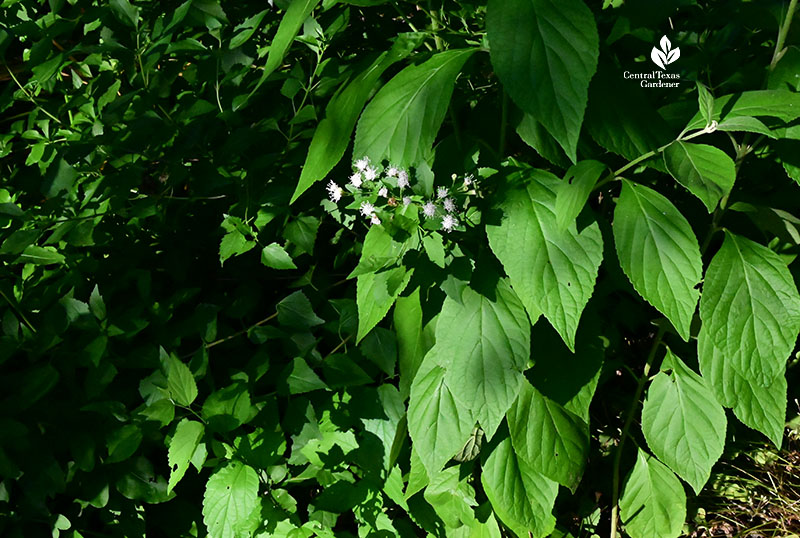
In a part shade spot dashed with sun, native white mistflower (Ageratina havanensis) flops over Mexican beautyberry until I prune it back. Like asters, mistflower’s signature bloom time is fall, geared for migrating butterflies. Beautyberry should be flowering already, with deep purple fruits in fall for birds, but this one was slow to return after the freeze.
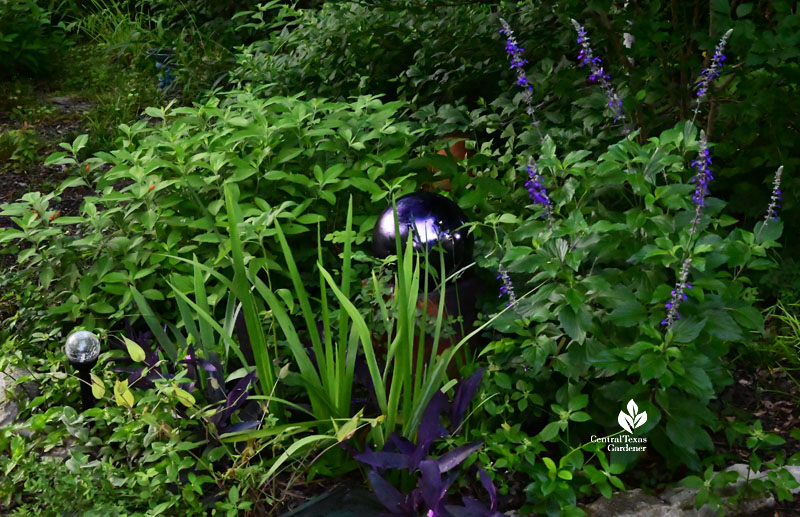
A few feet away, more shade dominates a nook with brief afternoon sun blasts. Salvia ‘Indigo Spires’ recently saw its first hummingbird. They’ll also go for Mexican honeysuckle’s (Justicia spicigera) deep orange tubular blossoms, as will butterflies and bees. Spring’s native false dayflower has withered while pass-along spring-blooming Louisiana iris contributes stately evergreen foliage. There’s more white mistflower and in fall, native coralberry’s magenta fruits for birds. Clippings of purple heart (Tradescantia pallida) knit it all together, flowering in warm weather for bees.
Find out more about layering for successional blooming
Austin’s Grow Green Native and Adapted Plants guide
Lady Bird Johnson Wildflower Center What’s in Bloom
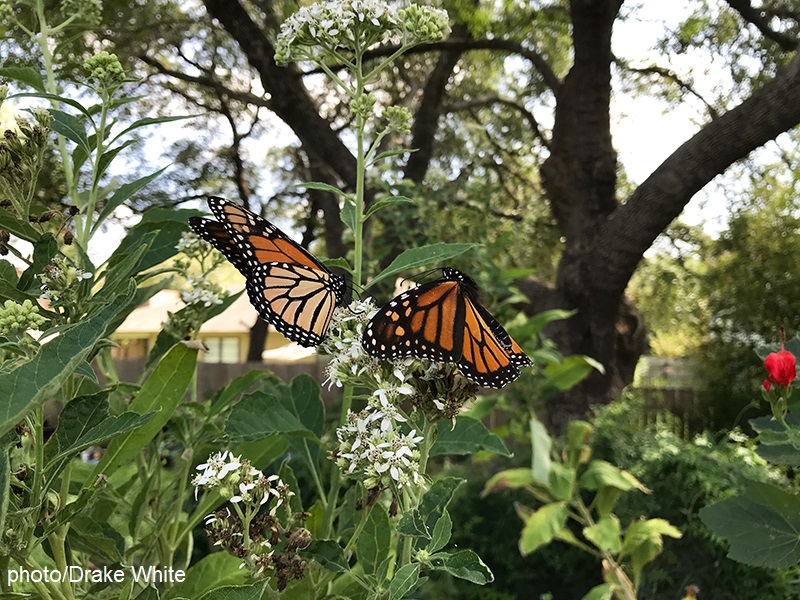
When to prune our native plants in summer? Drake White of the brand-new native plant nursery in San Antonio, The Nectar Bar, presented a quick guide on Instagram and Facebook. Honestly, I’m not sure about doing a lot in this record heat. Do keep plants hydrated.
And here’s our pandemic working-from-home Zoom interview with her about pruning, including tropical milkweed.
Thanks for stopping by!
Linda
tags:

